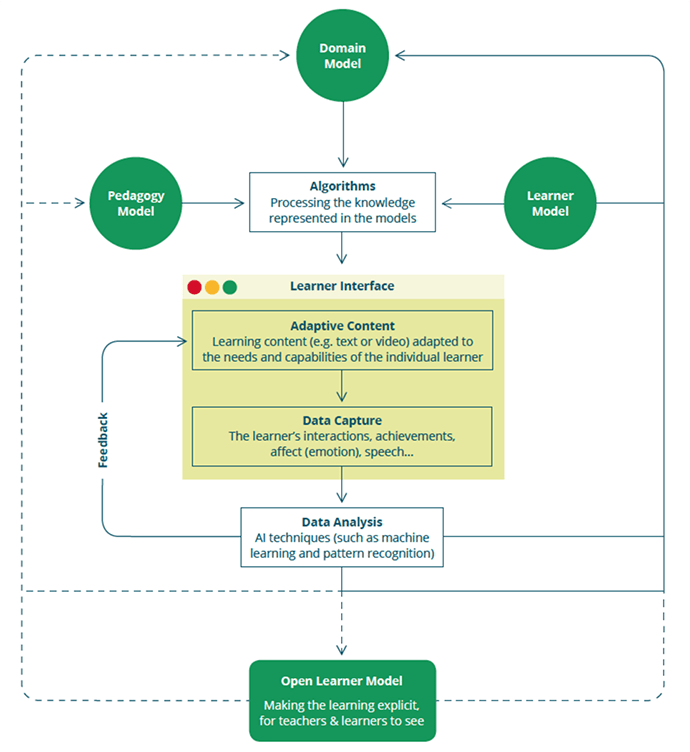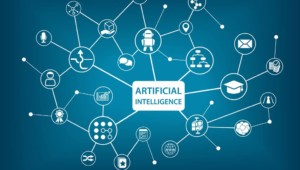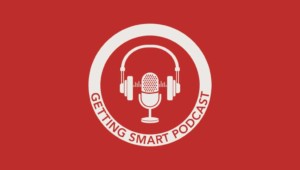Intelligence Unleashed: How Artificial Intelligence Will Improve Education

Pearson and the UCL Knowledge Lab, University College London, launched an important new paper entitled Intelligence Unleashed: An Argument for AI in Education.
Sir Michael Barber, Pearson’s chief learning officers, noted that while AI is eating jobs, AIEd can “contribute a proportionate response.” He said the paper defines what AI is and what can offer education.
What is Artificial Intelligence (AI)?
The authors define AI as:
Computer systems that have been designed to interact with the world through capabilities (for example, visual perception and speech recognition) and intelligent behaviours (for example, assessing the available information and then taking the most sensible action to achieve a stated goal) that we would think of as essentially human.
AI, especially a subset called machine learning, is increasingly part of our daily lives from entertainment, personal finance, transportation safety, and medical research (see 9 Ways Smart Machines Are Improving Your LIfe).

Intelligence in Education (AIEd)
The authors call AIEd, “the engine behind much ‘smart’ EdTech,” as well as a powerful tool providing “deeper, and more fine-grained understandings of how learning actually happens.”
AI depends on knowledge about the world and algorithms to intelligently process
that knowledge. There are three models at the heart of AIEd:
- Pedagogical model: knowledge and expertise of teaching including measurement and feedback;
- Domain model: Knowledge of the subject being including facts, frameworks, and procedures; and
- Learner model: Knowledge of the learner including engagement level, previous achievements and difficulties.
The figure below is a simplified picture of a typical model-based adaptive tutor illustrating the interaction of the three domains.
Term |
Definition |
| Algorithm | A defined list of steps for solving a problem. A computer program can be viewed as an elaborate algorithm. In AI, an algorithm is usually a small procedure that solves a recurrent problem. |
| Machine learning | Computer systems that learn from data, enabling them to make increasingly better predictions. |
| Decision theory | The mathematical study of strategies for optimal decisionmaking between options involving different risks or expectations of gain or loss depending on the outcome. |
The report outlines three current benefits of AIEd
- Intelligent Tutoring Systems: including dialog and metacognitive scaffolding;
- Intelligent support for collaborative learning: adaptive group formation, expert facilitation and moderation; and
- Intelligent virtual reality to support learning in authentic environments
“These three types of applications have been used to create learning environments that are notjust more personalised, but also more inclusive and engaging,” note the authors.
Next in AIEd
AIEd researchers have also developed social emotion learning models allowing models to incorporate a broader set of factors that influence learning. The authors speculate that this might “become the field’s greatest contribution to learning.”
AIEd contributions to 21st century skills will require better definition and measurement as well as appreciation for the kinds of experiences that develop these skills and dispositions. This will include a wider range of data capture devices including biological data, voice recognition, and eye tracking.
AIEd will increasingly provide just-in-time assessments to monitor progress, shape learning, and avoid stop-and-test.
Augmented and virtual reality developments will be incorporated into AIEd as well the internet of things.
To avoid exacerbating achievement gaps, the authors recommend that “AIEd assistants should be available for all parents, with additional support provided to those parents who need it most.”
Teachers will need to develop:
- Knowledge of how and where AIEd can contribute
- Research skills to use data from AIEd applications
- New teamwork and collaboration skills to fully deploy AIEd applications
“True progress will require the development of an AIEd infrastructure,” said Barber, something resembling a smartphone app marketplace with “hundreds and then thousands of individual AIEd components, developed in collaboration with educators, conformed to uniform international data standards, and shared with researchers and developers worldwide.”
The report focused specifically on the learning impact of AIEd, but half of the eight benefits of machine learning we recently cited are outside the classroom including process management, hiring, and transportation.
The authors conclude, “The future ability of AIEd to tackle real-life challenges in education depends on how we attend to each of these three dimensions – that is: (i) we need intelligent technologies that embody what we know about great teaching and learning in (ii) enticing consumer grade products, which (iii) are then used effectively in real-life settings that combine the best of human and machine.”
For more see:
- 9 Ways Smart Machines Are Improving Your Life
- 8 Ways Machine Learning Will Improve Education
- Machine Learning: The New Infrastructure for Everything
Stay in-the-know with all things EdTech and innovations in learning by signing up to receive the weekly Smart Update. This post includes mentions of a Getting Smart partner. For a full list of partners, affiliate organizations and all other disclosures please see our Partner page.







Vic Goldman
This article about AI is very interesting http://ai.business/2016/05/29/how-artificial-intelligence-can-change-education/